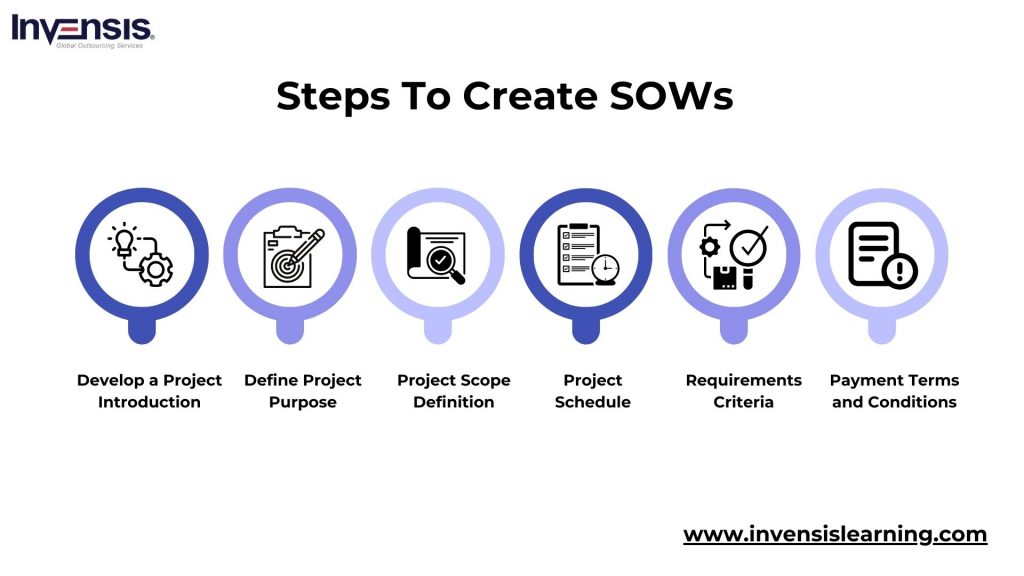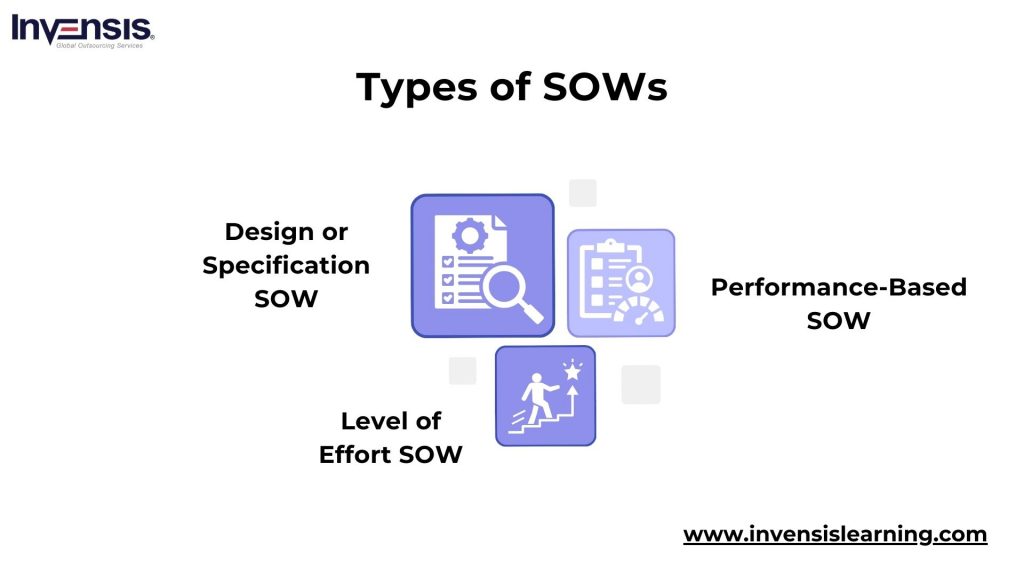
Every project starts with enthusiasm, but without clarity, that energy quickly turns into confusion. Deadlines slip, goals blur, and teams lose direction. That’s why the most successful project managers don’t just plan tasks, they define understanding from day one.
At the heart of that understanding lies a powerful document: the Statement of Work (SOW). It’s where strategy meets execution, where promises become deliverables, and where collaboration finds structure.
In today’s project-driven world, mastering the Statement of Work in project management isn’t just paperwork, it’s leadership in action. In this guide, you’ll uncover what makes a great SOW, the components that give it strength, and how to write one that keeps every stakeholder aligned, confident, and accountable from start to finish.
Table Of Content
- What is a Statement of Work (SOW)?
- Why Statement of Work in 2025 and Beyond?
- Components of a Statement of Work
- How to Create SOWs?
- Types of SOWs
- Benefits of using SOW in a project
- Statement of Work vs. Scope of Work
- Conclusion
What is a Statement of Work (SOW)?
A Statement of Work (SOW) is a formal document that defines the scope, objectives, deliverables, and expectations of a project in precise detail. In project management, it acts as both a contractual agreement and an execution roadmap, ensuring every stakeholder understands what needs to be done, who will do it, and how success will be measured.
The SOW goes beyond a simple description, it translates project ideas into actionable terms. It aligns the client’s goals with the team’s execution plan, reduces the risk of miscommunication, and serves as the reference point whenever there’s a need to clarify expectations or resolve disputes.
A well-defined SOW typically includes project goals, scope of work, timelines, milestones, budget estimates, performance criteria, and approval processes. It’s reviewed and signed by both the client and the service provider to confirm mutual understanding before work begins.
| Example:
Imagine an organization outsourcing its new customer relationship management (CRM) system. The Statement of Work would define the CRM’s expected capabilities, the implementation phases, data migration process, testing protocols, and delivery deadlines. It ensures that the vendor, client, and project team are aligned on every outcome and responsibility, leaving no room for assumptions. The SOW is the anchor document that keeps projects on course. It provides structure, accountability, and measurable clarity, qualities that are essential for success. |
Why Statement of Work in 2025 and Beyond?
As projects become more agile, global, and technology-driven, the Statement of Work (SOW) is evolving from a static contract into a strategic management framework. It no longer just defines what needs to be delivered; it shapes how collaboration, accountability, and adaptability happen throughout the project lifecycle.
In 2025, with distributed teams, digital ecosystems, and AI-assisted workflows, organizations rely on SOWs to maintain alignment across multiple stakeholders. A well-structured SOW ensures clarity amid complexity and keeps every contributor, from clients to vendors, working toward shared outcomes.
Here’s why SOWs matter more than ever today:
- Enable Business Agility: Flexible SOWs allow project teams to adjust priorities as business needs evolve.
- Enhance Accountability: Clearly written roles and acceptance criteria prevent misunderstandings and finger-pointing.
- Support Governance and Compliance: As data security and regulatory expectations increase, SOWs provide a transparent framework for oversight.
- Drive Measurable Value: Outcome-focused SOWs shift attention from task completion to impact, ensuring every deliverable contributes to business results.
The modern SOW isn’t just a document; it’s a living agreement that enables clarity, reduces risk, and aligns execution with strategy.
Mastering it is no longer optional for project managers; it’s a core leadership skill in the era of agile transformation.
Components of a Statement of Work
The strength of a Statement of Work lies in its clarity and structure. Every effective SOW must include well-defined components that outline the what, why, when, and how of a project. These elements ensure all stakeholders share a common understanding of objectives, deliverables, and execution methods.
Below are the key components of a Statement of Work (SOW) and how each contributes to successful project delivery:
-
Objectives
Clearly articulate the project’s objectives, detailing the purpose and desired outcomes. Objectives should be specific, measurable, achievable, relevant, and time-bound (SMART) to facilitate a clear understanding and evaluation of project success.
-
Scope of Work
Define the scope of work, outlining the tasks and responsibilities of both parties involved in the project. This section should specify what work will be performed, who will be responsible for it, and the methodologies and processes that will be utilized. Include any tools, resources, or technologies required for project execution and specify reporting mechanisms for tracking progress and communicating updates.
-
Milestones
Incorporate milestones into the Statement of Work to mark significant points of progress or achievement throughout the project lifecycle. Milestones provide clear checkpoints for evaluating progress and ensuring alignment between project expectations and delivery timelines. Payment terms may also be tied to the completion of these milestones.
-
Timelines
Provide an estimated timeline for the project duration, outlining when each milestone, deliverable, and associated payment is expected. Timelines should be flexible to accommodate changes but may include specific dates or span a range of dates to allow for adaptability.
-
Costs
Detail the overall project costs, including breakdowns for different project phases and itemized expenses such as equipment, staffing, travel, and other relevant expenditures. Specify payment terms, including the frequency and method of payment, to ensure mutual understanding and agreement between parties.
-
Signatures
Both parties should sign and date the Statement of Work document to signify their agreement with the terms and conditions outlined. Signatures confirm mutual understanding and commitment to fulfilling the obligations outlined in the document.
How to Create SOWs?
Creating a Statement of Work isn’t just about documenting tasks, it’s about defining clarity, accountability, and alignment across every stage of a project. A well-written SOW helps eliminate confusion, control risks, and ensure both the client and project team are working toward the same outcome.
Follow this step-by-step approach to create an effective SOW for your next project:
- Develop a Project Introduction: Begin by creating a brief introduction to the project, providing an overview of its purpose and objectives. This sets the context for the rest of the document
- Define Project Purpose: Clearly define the purpose and goals of the project. Specify what the project aims to achieve and the problem it intends to solve
- Project Scope Definition: Define the project scope, outlining the boundaries and limitations of the work to be performed. Be specific about what is included in the scope and what is excluded
- Project Schedule: Develop a project schedule that outlines the timeline for completing each task, milestone, and deliverable. Ensure that the schedule is realistic and achievable
- Project Requirements and Acceptance Criteria: Define the project requirements and acceptance criteria that must be met for deliverables to be accepted. This ensures clarity on project expectations and quality standards
- Payment Terms and Conditions: Specify the payment terms and conditions for the project, including payment milestones and methods. Clearly outline the payment schedule and any penalties for late payments
By following these steps, you can create a comprehensive and well-written Statement of Work that mitigates risks, clarifies expectations, and ensures successful project execution.
| Tip for Project Managers
Regularly revisit and update the SOW during major project changes. A “living” SOW allows teams to stay aligned even when priorities evolve, ensuring long-term project success. |
Types of SOWs
Not all projects are structured the same way, and neither are their Statements of Work. Depending on the project’s nature, control level, and deliverable complexity, the type of SOW you choose determines how work is defined, managed, and measured.
Here are the three most common types of Statement of Work (SOW) used in project management, along with when to use each:
-
Design or Specification SOW
This category of SOW provides detailed specifications and requirements necessary to complete a project. It instructs the supplier on how to execute the work and which processes to adhere to. Additionally, it outlines any specific industry regulations or standards that must be followed. The organization using this type of SOW typically assumes most of the project’s risk.
| Example:
In a construction project, the SOW might specify the type of concrete, design blueprint, and safety standards that contractors must adhere to. Best for: Engineering, manufacturing, construction, or highly regulated projects. |
-
Level of Effort SOW
A Level of Effort SOW is employed for service-based projects. It outlines the expected work hours and materials needed to perform the service over a specific timeframe. This type of SOW provides a general framework for service delivery without specifying detailed tasks or deliverables. This SOW is preferred when the expected outcome from the project may change over time. It offers flexibility in terms of resources allocation.
| Example:
An IT support contract might specify 400 service hours per quarter for system monitoring and troubleshooting, without rigidly defining daily tasks. Best for: Consulting, maintenance, or research-oriented projects. |
-
Performance-Based SOW
A Performance-Based SOW clearly defines the project’s objectives, allocated resources, and expected deliverables without prescribing the specific methods or processes for achieving them. This type of SOW offers flexibility, focuses on project outcomes, and distributes risk between parties. It is often preferred by companies due to its adaptability and emphasis on results rather than methods.
| Example:
A cloud migration project SOW may specify “100% data integrity, zero downtime during transition” as success metrics, but allow the vendor to select the best tools and workflows. Best for: Technology, outsourcing, and results-driven projects. |
Benefits of using SOW in a project
A Statement of Work is an investment in project success. By taking the time to create a clear and comprehensive SOW, project managers can set the stage for smoother execution, better communication, and, ultimately, a higher chance of achieving project goals on time and within budget. Utilizing SOW in a project offers numerous benefits:
- Improves Clarity and Understanding: Ensures all understand the project scope, objectives, and timeline, avoiding misunderstandings
- Risk Mitigation: Identifies risks upfront, enabling proactive management and reducing impact on project success
- Achieves Common Objectives: Serves as a roadmap, aligning efforts towards desired outcomes
- Manages Expectations: Defines roles and timelines clearly, reducing dissatisfaction and misunderstandings
- Protects the Project Team: Acts as a contractual agreement, reducing disputes and providing legal documentation
- Attracts and Retains Clients: Inspires client confidence by showcasing your team’s ability to plan, organize, and deliver successful projects
Statement of Work vs. Scope of Work
In project management, Statement of Work (SOW) and Scope of Work (SoW) are often used interchangeably, but they aren’t the same. Think of the SOW as the “contractual blueprint” for an entire project, while the Scope of Work is the “execution map” for the actual tasks to be performed.
The SOW gives the big picture, what needs to be achieved, by when, and under what conditions. The Scope of Work, on the other hand, zooms in, how the work will be done, who will do it, and what deliverables will be produced.
| Aspect | Statement of Work (SOW) | Scope of Work (SoW) |
| Definition | A comprehensive document outlining the entire project details | Subset of SOW, focusing on specific tasks and deliverables |
| Contents | Includes project objectives, deliverables, timelines, milestones, etc. | Details specific tasks, activities, and deliverables within the project scope |
| Purpose | Formal agreement between client and project team/service provider | Defines boundaries of project scope, prevents scope creep |
| Focus | Provides overview of the entire project | Specific focus on work to be performed |
| Contractual Aspects | Outlines terms and conditions of the project | Helps prevent misunderstandings, clarifies project boundaries |
Conclusion
Projects rarely fail because of poor execution; they fail because of unclear expectations. That’s where a Statement of Work (SOW) makes all the difference. It transforms assumptions into agreements, ideas into measurable goals, and collaboration into commitment.
For project managers, the SOW isn’t just paperwork; it’s a strategic instrument of trust and precision. It defines accountability, clarifies deliverables, and keeps every phase of the project anchored to its purpose. When written thoughtfully, it becomes the single source of truth that drives decisions, prevents conflicts, and ensures transparency from kickoff to completion.
Today, where teams span geographies and projects move quickly, the ability to draft and manage a strong SOW separates good managers from great leaders. It’s a reflection of clarity, control, and professional maturity.















